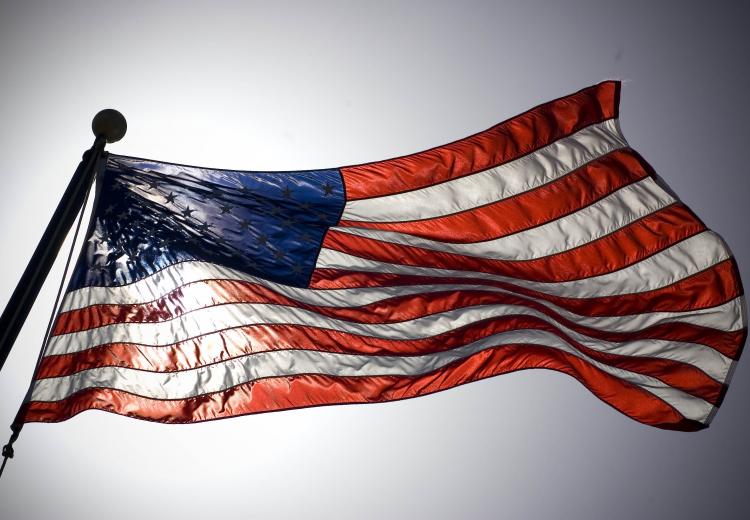Stars and Stripes Forever: Flag Facts for Flag Day

The American flag flies prominently during the World Patriot Tour performance at Hickam Air Force Base.
Did you know that the original Pledge of Allegiance did not contain the phrase "of America"? In 1923, the words were added to avoid confusion among immigrants as to which country they were pledging their allegiance! The pledge was officially amended again on June 14, 1954, by a joint resolution of Congress approved by President Eisenhower, to read "one nation under God." But no matter how it has changed over the years, the pledge has remained a time-honored salute to the American flag, one of our most cherished national symbols.
In this unit, students will learn what a symbol is and how this particular symbol—the American flag—is an important part of our everyday lives. Learning the history of the flag will help instill in students respect for our national symbol and help them learn appropriate etiquette regarding our flag. Students will learn that other symbols of our country, such as the president and certain holidays, like Flag Day, are important to us as well. Students can also contribute symbols from their familial, ethnic and national cultures to show the diversity of American society and its links to other parts of the world.
Guiding Questions
What is a symbol?
What does the symbol, our American flag, stand for?
Why do countries have flags?
Why are flags important to countries?
How did the design of our American flag develop to reach its present stage?
What do other countries' flags look like?
Learning Objectives
Tell what a symbol is and give examples of a symbol, such as the American flag.
Give examples of other countries and their flags.
Understand the relationship of city to state to country.
Explain how symbols relate to objects and actions, how one thing can stand for another.
Talk about the design of the American flag, i.e., what the colors mean, and that the 13 stripes represent the original 13 colonies.
Discuss the legend of Betsy Ross (1752-1836).
Learn about Flag Day (June 14).
